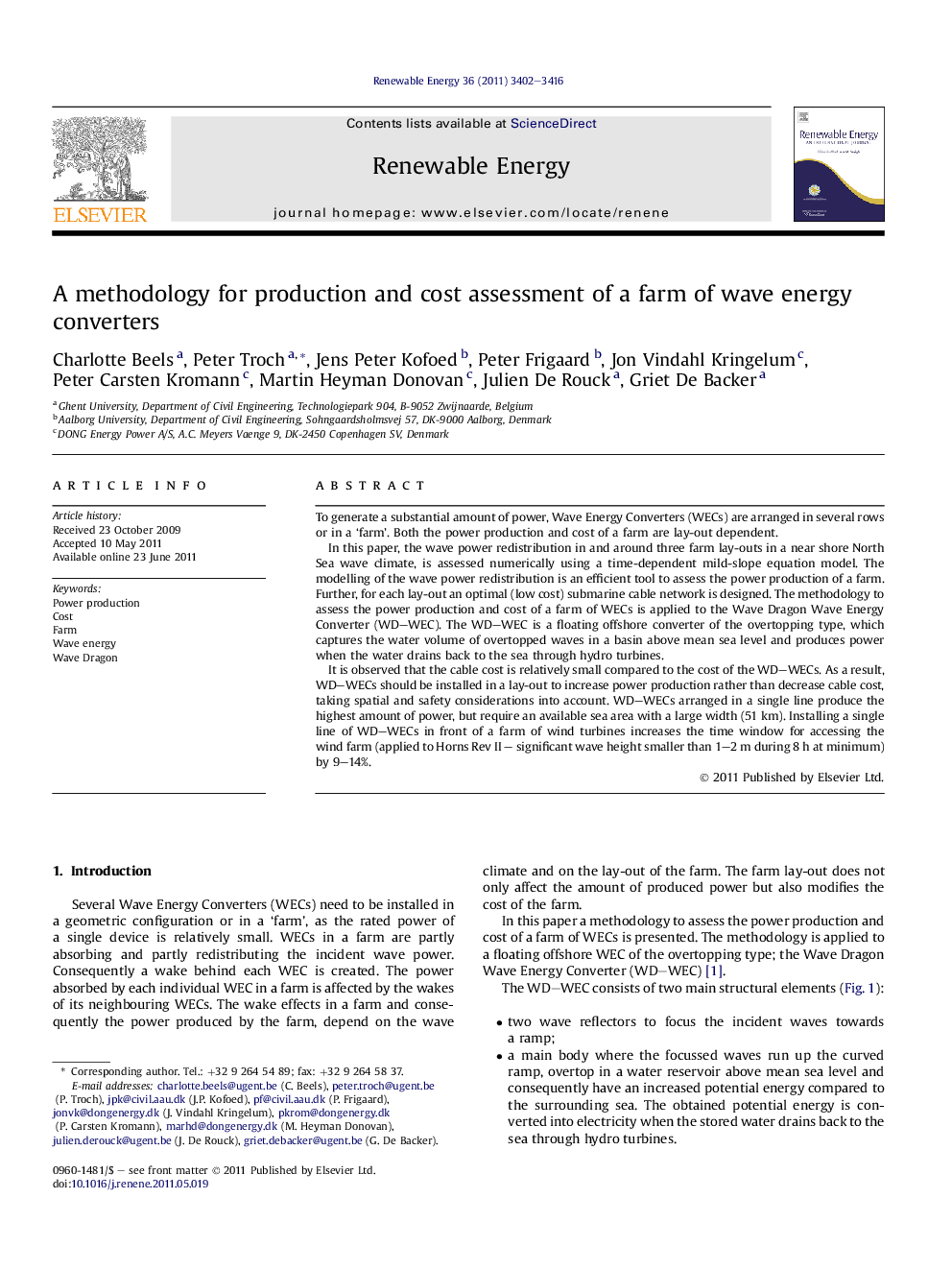| Article ID | Journal | Published Year | Pages | File Type |
|---|---|---|---|---|
| 301195 | Renewable Energy | 2011 | 15 Pages |
To generate a substantial amount of power, Wave Energy Converters (WECs) are arranged in several rows or in a ‘farm’. Both the power production and cost of a farm are lay-out dependent.In this paper, the wave power redistribution in and around three farm lay-outs in a near shore North Sea wave climate, is assessed numerically using a time-dependent mild-slope equation model. The modelling of the wave power redistribution is an efficient tool to assess the power production of a farm. Further, for each lay-out an optimal (low cost) submarine cable network is designed. The methodology to assess the power production and cost of a farm of WECs is applied to the Wave Dragon Wave Energy Converter (WD–WEC). The WD–WEC is a floating offshore converter of the overtopping type, which captures the water volume of overtopped waves in a basin above mean sea level and produces power when the water drains back to the sea through hydro turbines.It is observed that the cable cost is relatively small compared to the cost of the WD–WECs. As a result, WD–WECs should be installed in a lay-out to increase power production rather than decrease cable cost, taking spatial and safety considerations into account. WD–WECs arranged in a single line produce the highest amount of power, but require an available sea area with a large width (51 km). Installing a single line of WD–WECs in front of a farm of wind turbines increases the time window for accessing the wind farm (applied to Horns Rev II – significant wave height smaller than 1–2 m during 8 h at minimum) by 9–14%.
► We model three farm lay-outs of Wave Dragon wave energy converters. ► Modelling is carried out using a time-dependent mild-slope equation model, MILDwave. ► The wave power redistribution around each farm is modelled to assess the power production. ► For each farm lay-out, an optimal (low cost) submarine cable network is designed. ► The cable cost is relatively small compared to the cost of the Wave Dragon wave energy converters.
